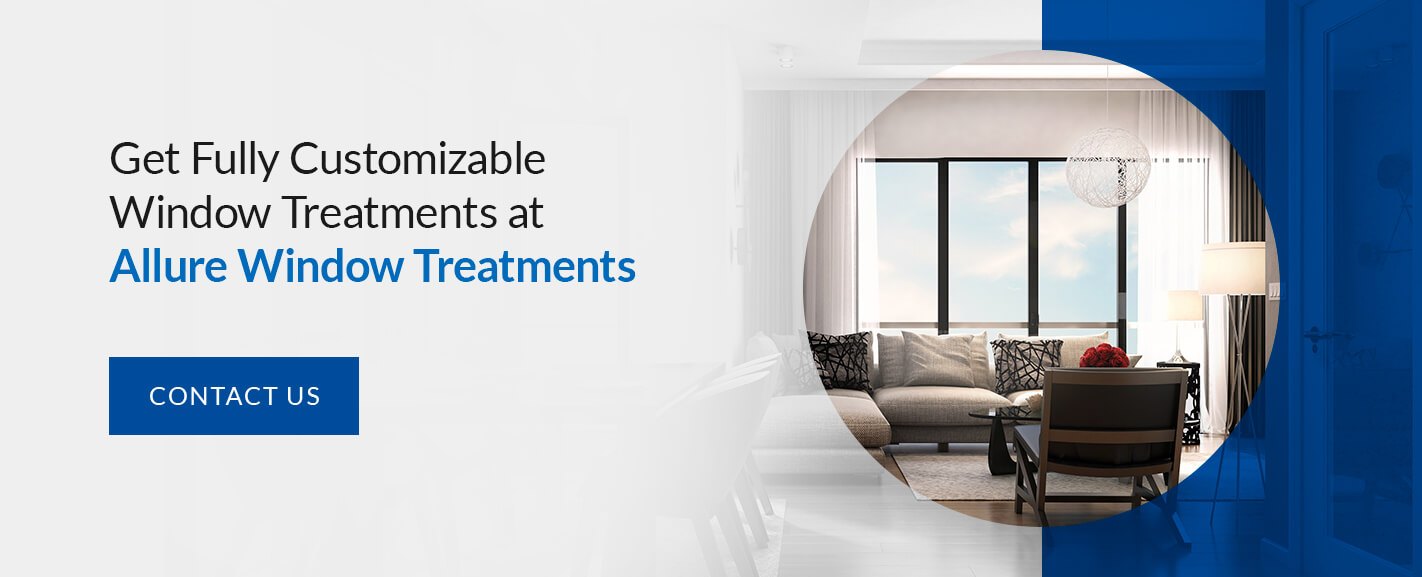Moving and Window Treatments: Everything You Need
Table of Contents
- What to Consider When Choosing Window Treatments for a New Home
- Get Fully Customizable Window Treatments
When moving to a new home or planning to build a new construction, an important functional and design-focused element to consider is the window treatments. If you have bought a new house with no window treatments, you will want to consider several lifestyle factors and aspects of each room to determine the perfect window treatments for your home.
A window treatment can make all the difference in a home by enhancing its overall design and sophistication while also providing numerous benefits, such as light-filtering or room-darkening shades. Each room of your house can benefit from unique, custom window treatments and often requires different styles and types for the best results. Learn more about what to consider when choosing new window treatments for your residence.
What to Consider When Choosing Window Treatments for a New Home

1. Window Sizes
The size of your windows is essential when putting up new window treatments. In most cases, a house features several window shapes and sizes, meaning homeowners will likely need to select several window treatments to meet all their needs. Some of the most common window shapes include circular, bay, arched and rectangular.
Additionally, how a window opens will also affect the type of window treatment and coverage you need. Double- and single-hung windows are traditional and common styles that open by sliding from the bottom upward. Casement windows are also prevalent, hinged on one side and attached to a frame. These windows typically open like a door.
You may also have awning windows in your new home, which are hinged at the top but open from the bottom outward. Finally, one of the other most common types is sliding windows, which can slide from side to side. In most cases, sliding windows are often used for side or porch doors.
2. Sun Direction
The direction of the sun and how it enters your room plays an essential role in which window treatments you incorporate. For example, north-facing windows may create a spot where cold air enters your home, which can be a large concern for homeowners on chilly nights. To counteract this, many homeowners put up window treatments that minimize cold air infiltration, including Hunter Douglas products.
On the other hand, south-facing windows are subjected to sunlight and are commonly where heat enters your home, which can be ideal on colder days and nights. However, heat entering the house is typically not something homeowners want during the summer months. Window treatments with ultraviolet (UV) protection and glare resistance that can protect furnishing from direct sunlight are often recommended.
For east-facing window treatments, you may want to consider the impacts of direct eastern sunlight on your fabrics and furniture. Most homeowners choose light-diffusing window treatments to limit the intensity of brightness, offer UV protection and still allow a healthy amount of light inside. East-facing windows may also let in more heat because of high solar gain in the mornings, meaning solar heat control window treatments may be right for you.
Finally, west-facing windows typically experience the warmest sunlight, dramatically influencing the temperature inside your home. When choosing window shades for west-facing windows, consider options that help reduce heat gain and maintain your home’s ambient temperature.
3. Light-Filtering Treatments
Homes filled with natural light are beautiful and relaxing, but intense, prolonged, direct sunlight can negatively impact furnishings. Direct sunlight can also cause a glare on screens and raise your home’s temperature. Light-filtering window treatments can help minimize the negative effects of prolonged sunlight.
Light-filtering treatments can lessen the damaging effects of direct sunlight while preserving the view and beauty of natural light filling your home. These window treatments can also help reduce the glare on screens, making them an ideal choice for a home office or TV room.
4. Room-Darkening Treatments
While light-filtering window treatments are a great choice for some rooms, homeowners may also enjoy room-darkening window treatments for select rooms in their house. Room-darkening shades reduce the overall amount of light that enters a room. While natural light is often welcome in most rooms, some homeowners may prefer a darker space.
For example, homeowners with a media room may choose room-darkening treatments to enjoy a movie without the glare or negative effects of light. Bedrooms are also popular rooms for darkening window treatments, as many people prefer to sleep in almost complete darkness. Light sleepers may wake up with early sunrises, making room-darkening window treatments perfect for their bedrooms.
5. Interior Design
While the function of window treatments is undeniably important, you also want to consider your interior design and personal taste. There are many window treatments available for a new home, meaning it’s easy to choose a style you like that complements your home’s interior design and architecture. Try to find a balance between function and appearance for the best window treatment possible.
Some homeowners choose custom window treatments as a room’s focal point or design element that ties together a room’s theme. Before choosing a window treatment, think about your color scheme, architectural style, preferred material and individual design taste.
6. Privacy
While most homeowners enjoy privacy in every room of their home, the overall level of privacy you need will vary from room to room. For example, living rooms or kitchens tend to have larger windows with lighter window treatments, allowing for as much natural light to flow in as possible. These spaces are often communal areas where people entertain family and friends, requiring less privacy.
On the other hand, bathrooms and bedrooms require the maximum level of privacy to ensure everyone in the home is comfortable and has the solitude they need. These rooms are the most private ones of the house, making it crucial that no one can see through window treatments from the outside.
Certain window treatments are designed for minimal or maximum privacy, meaning it’s important to understand the level of seclusion they’ll provide you. In some cases, homeowners may use a window treatment and place an additional lining on the window for extra privacy.
Get Fully Customizable Window Treatments in Philadelphia

Get started with a free consultation by contacting us online today.

Shani is the Marketing Director of Allure Window Treatments. She has over a decade of experience in the home improvement and window treatments industry.

Sorry, the comment form is closed at this time.